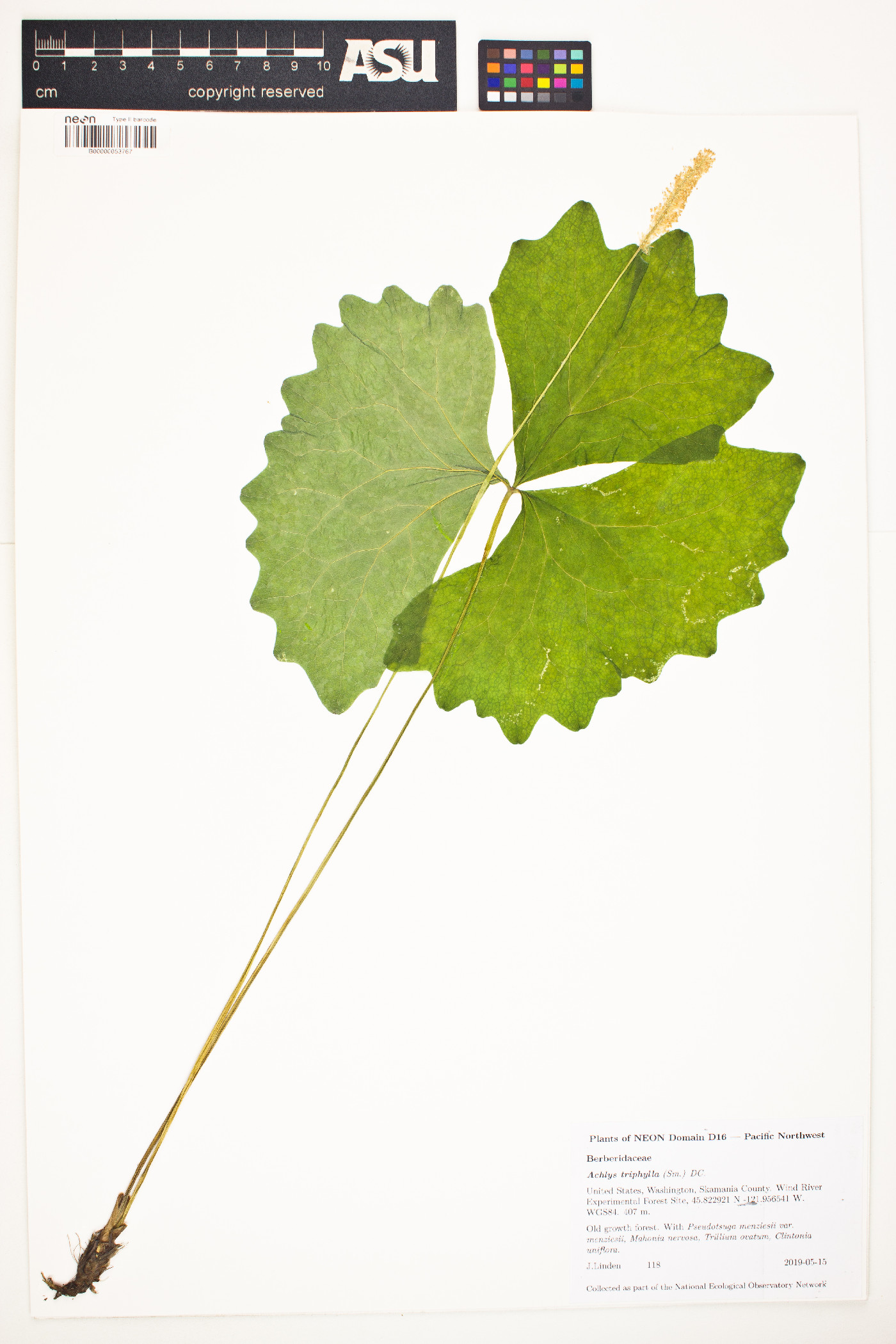|
Family: Berberidaceae |
Herbs , perennial, deciduous, 2.5-5 dm, glabrous. Rhizomes extensive, branching, producing 1-few foliage leaves or flowering shoots per year. Aerial stems absent. Leaves basal, alternate, 3-foliolate; petiole long, slender. Leaf blade orbiculate in gross outline, 20-40 cm; leaflet blades fan-shaped, entire or lobed, lateral leaflet blades strongly asymmetric, margins entire to coarsely sinuate; venation palmate. Inflorescences terminal, dense scapose-pedunculate spikes of inconspicuous flowers. Flowers 3-merous, white to cream, 6 mm or less; bracteoles absent; sepals absent; petals absent; stamens 8-10(-13); anthers dehiscing by 2 apically hinged flaps; pollen exine striate; ovaries asymmetrically ellipsoid; placentation marginal, placenta developed only near base of ovary. Fruits follicles with transverse dehiscence, purplish red or brown, curved, furrowed. Seeds 1, brown; aril absent. x = 6. Achlys is of particular interest because of its amphi-Pacific disjunction. Despite the 8000 km or more disjunction, the taxa are remarkably similar in morphology, ecology, and karyology. Japanese populations are diploid; American populations are diploid and tetraploid. Two species are recognized in this treatment; some researchers prefer to treat them as varieties. In the Californian portion of the range, some field botanists believe the two taxa are sufficiently morphologically distinct to be called species; farther north these differences are reportedly less apparent.
|


